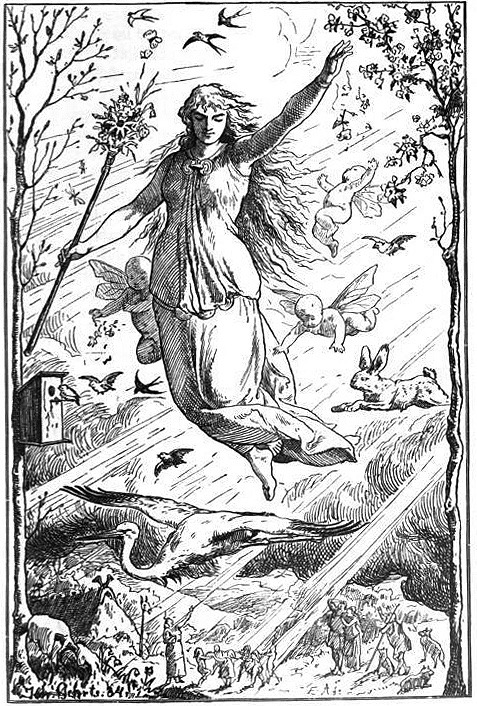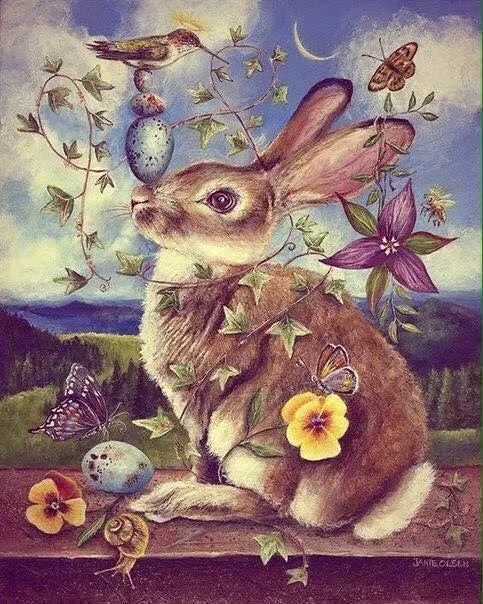
unarosagialla
4 posts
Latest Posts by unarosagialla
Goddess Aphrodite affirmations
Here are some affirmations inspired by the energy and qualities associated with the Goddess Aphrodite:
1. "I am a vessel of love, beauty, and grace."
2. "I radiate love and attract it effortlessly."
3. "I am worthy of deep and meaningful connections."
4. "My heart is open, and I receive love with gratitude."
5. "I embrace my inner and outer beauty with confidence."
6. "I am a beacon of sensuality and passion."
7. "I attract positive and loving relationships into my life."
8. "I am deserving of love, respect, and adoration."
9. "I am a source of inspiration and empowerment for others."
10. "I am a goddess of love, and I honor my divine essence."
Repeat these affirmations regularly to internalize and embody the qualities of love, beauty, and grace associated with Aphrodite. Remember, affirmations are most effective when practiced with belief and intention.
THE ORIGIN OF BIRTHDAY CELEBRATIONS
Historians believe that birthday celebrations first appeared in an ancient Greek ritual to honor Artemis, the Goddess associated with childbirth, wildlife and the moon. In this ritual, Greek people made circular cakes lit with candles to symbolize the Moon and its light.
They also thought that days of major change, like birthdays, welcomed evil spirits. They lit candles in response to these spirits almost as if they represented a light in the darkness. This implies that birthday celebrations started as a form of protection.

Written references to the tradition of blowing out the candles were first documented in Switzerland’s Folklore Journal in 1881, where there is a depiction of a birthday cake as having lighted candles which correspond to each year of life. These candles were required to be blown out, individually, by the person whose birthday it was.
Although cakes did exist in other ancient civilizations, such as Egypt and China, it is considered that cake making was passed to the Romans and the Western world through the Greeks.
As a rule, ancient Romans only celebrated men’s 50th birthdays. The birthdays of females were not celebrated until the 12th century in Europe.
Many centuries after that, children would be the first to have their birthdays celebrated in what is now Germany. Here, candles were added for each year of the child’s life, plus one candle for the hope of living for at least one more year – these birthdays were called Kinderfeste. Blowing out these candles while making a wish was a big part of these celebrations. In addition to candles, friends and family would gather around the birthday person and protect them from harm with good cheers, thoughts, and wishes. They would give gifts to bring even more good cheer that would ward off evil spirits. Noisemakers were also used to scare away the unwanted evill.
Sources:

KITCHEN WITCHERY
Kitchen witchery is a versatile and easy form to bring magick into your daily life. It is a warm, nurturing and down-to-earth way to practice magick and it is a fantastic path to try if you are broom closeted and need to keep your craft secret or outwardly invisible to others.
It defines every kind of magickal working that combines cooking, baking or culinary mixing and witchcraft. You could even stretch the definition as far as to include magickal crafting or work that is done in the kitchen.
Kitchen witchery can be performed in two different ways:
food rituals;
kitchen magick.
Birthdays and weddings are considered a food ritual because of the cake and candles – it is a means of happiness, good luck and for your wish to come true. It is about eating together and the celebration of the event that is taking place. Witches usually have celebratory meals when it comes to Sabbaths.
Kitchen magick is the practice of manipulating the energy that’s around us and in the food, making an intention known and trying to have it manifested.
Food is a magickal tool that can help you in immense ways!
A kitchen witch is someone that practices their witchcraft in the kitchen and weaves their magick into the food they prepare.
There are different types of kitchen magick, such as:
ENERGETIC MAGICK
Energetic magick is all about infusing food with energy and intention. This can be done through meditating on or visualizing a certain outcome, feeling an emotion or goal that will be worked into the food.
Common ways to do so is to stir it with a wooden spoon or simply mindfully blessing a meal.
RUNE, SYMBOL AND SIGIL MAGICK
Rune, symbol and sigil magick usage is a common way to work magick in the kitchen. This can be done by drawing them into pie crusts, bread and stirring them into sauces or into your morning coffee. You can also draw, carve or burn them on your cooking tools for different goals. This way you can draw a specific intention into your food.
MAGICKAL HERBALISM
You can infuse your morning coffee with magic ingredients, like cinnamon or vanilla, and stir it with intention.
MEDICINAL HERBALISM
If you are working with spells of health and healing, it is worth looking into herbs as they not only have magickal properties, but also medical.
INTENTIONAL COOKING
It is important to choose the method that resonates with you and your needs. Make your kitchen a space where you feel comfortable and at ease.
Every act of cooking and preparation can be infused with magick and carry energetical significance – for example, washing your hands and ingredients can be used to cleanse negative energies or anything undesirable.
Kitchen witchery is free and not fixed, so you don’t really need anything. A lot of witches love using tools, such as:
cups, bowls and pots possess loving energies. Rounded pots and bowls are generally associated with Goddess energy, as they were most commonly used to feed and nourish others in older times – they hold and contain sacred food, which is our key to life. Pots are associated with The Great Mother.
Element: Water;
the oven is seen as a symbol of the Divine, as well as transformation. Ovens have been used in various forms for many years and thus are preferable to newer inventions like microwaves when magickally cooking.
Element: Fire;
plates and platters generally represent the Physical world, money and abundance. They are ruled by the Sun.
Element: Earth;
spoons are mini bowls on handles, so they strongly correlate with bowls.
Element: Water;
forks are sacred, as they are the main tool for eating. They are ruled by Mars.
Element: Fire;
knives are associated with life and death, as knives can be used to bring about both stabbing and cutting food to eat. They are ruled by Mars.
Element: Fire.
Sources:
OSTARA
Ostara is one of the eight sabbats on the Wiccan Wheel of the Year. It’s one of the four minor sabbats which fall on the equinoxes and solstices.
The day hangs in perfect balance with equal amounts of light and dark, bringing with it all the hope and promise that spring signifies. It falls between March 19th and March 22nd in the Northern Hemisphere. It is not necessarily a one day celebration, you can celebrate all week long.
→ HISTORY
Ostara is an ancient festival of Germanic origin celebrating the Goddess of the dawn. This name came from the Goddess of spring and the dawn, Eostre.

She was traditionally honored and celebrated during the month of April with feasts and celebrations focused on fertility, new beginnings and rebirth.
The first writings we have on Ostara come from the English monk Venerable Bede, who wrote of an ancient festival that has died out, though some of the traditions had been incorporated into the Anglo Saxon Christian customs.
It was a fertility festival in honor of the Goddess and the dawning of the new year.
The biggest influence Ostara traditions have had that we still can see in modern times is the Christian holiday Easter. The name Easter is a derivative of Ostara (Eostre – just change the “o” to an “a” and invert the “er” at the end).
→ SYMBOLS
The hare is strongly associated with the Goddess. A popular myth includes her finding a wounded bird and healing it by turning it into a hare as it could no longer fly. The hare retained its egg-laying abilities and laid colored eggs. It then gave these eggs to the Goddess as gratitude. The hare represents the graciousness of the Goddess and fertility, given how many young ones they have.
Eggs represent both fertility and birth. Worshippers also bring them gifts for the Goddess and eat them at feasts. They also represent abundance and the sun.
Baking is essential during this festivity and hot cross buns are a primary feature. The four cross points represent the four elements of Fire, Earth, Water, and Air.
Springtime also sees flowers emerge, which symbolize the end of winter. They are a symbol of hope and life.
The Ostara period is also the start of the planting season. The seeds have the potential for new life and represent hope in the abundance to come. They are also associated with fertility and nature’s rebirth.

→ COLORS
Colors hold plenty of meaning when associated with sabbats. Each Sabbat has its colors to go with its central themes. For Ostara, you can use the following colors in your decorations and rituals:
green represents all the newly growing plants. It represents the abundance of nature, hope, and new life. It also represents earth, growth, new opportunities, fertility, and forgiveness;
light blue represents healing, fairness and truthfulness, honest communication, trust, and patience. It is a virtuous color that also represents innocence and purity;
lavender is associated with romance, love, and healing;
pink’s soft and tender nature represents romantic love, good relationships at home and with friends, empathy, self-care, and healing the heart;
yellow celebrates the returning sunshine, which keeps getting stronger each day. It represents persuasion, protection, self-control, self-confidence, happiness, abundance, and self-empowerment;
white represents a blank slate to start over. It is the fresh start that spring offers so you can pursue new ideas and opportunities. It also signifies cleansing and purification, peace, and connection to divinity.
→ CELEBRATIONS
A ritual bath to clear away the dark lethargy of winter can be a great idea. Pick soaps with bright citrus or floral smells to wake your mind or remind you of flowering fields. Something with exfoliation to it wakes up the skin while scrubbing away what is no longer vital. Candle meditations embrace the fire and heat of the sun and place it at the tips of your fingers.
Take time to meditate or journal and think about your intentions for the next few weeks as it relates to the goals you want to achieve.
Create an Altar by yourself or with friends and loved ones, decorate an altar for spring. Make it a beautiful, colorful, celebration of life and new beginnings.
Get crafty: decorate eggs with dyes, decoupage or paint. You can purchase plastic or wooden eggs to decorate and use year after year as well (a vegan option).
Plant seeds for a vegetable or flower garden.
Reconnect with animals by taking yourself to the zoo or to a farm. Spend time with the small creatures and gaze into their beautiful, big eyes. Additionally, if there are new babies in your family, spend time with them. Take a picnic, a walk, or do whatever you are drawn to.
Feast with a nice and vibrant meal: have a picnic and try to find a place by water to represent the flowing energy of life and invite everyone to bring a dish that shows the vibrant colors of the season. It is not only a time for new beginnings, but for new friendship, adventures, atmospheres, and traditions. Take a nature walk.
Sources:





